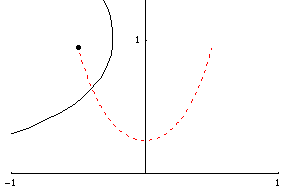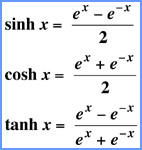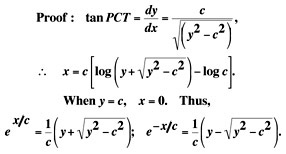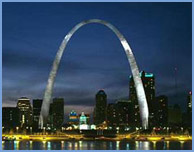|
For
the Catenary . . . .
 |
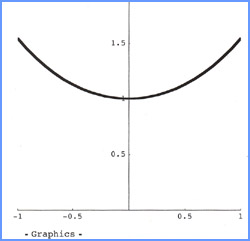 |
Definition:
The catenary is the form assumed by a
perfectly flexible inextensible chain of uniform
density hanging from
two supports not in the same vertical line.
|
|
MATHEMATICA®Code
 The Catenary family of curves is easily entered and modified in MATHEMATICA® or on a graphing calculator.
|
A Brief Historical Sketch . . .
To underscore the
historical importance of the catenary,
we have selected the figures submitted by Gottfried
Leibniz and
Christiaan Huygens to Jacob Bernoulli for publication
in the widely
acclaimed Acta
Eruditorum,
1691................................
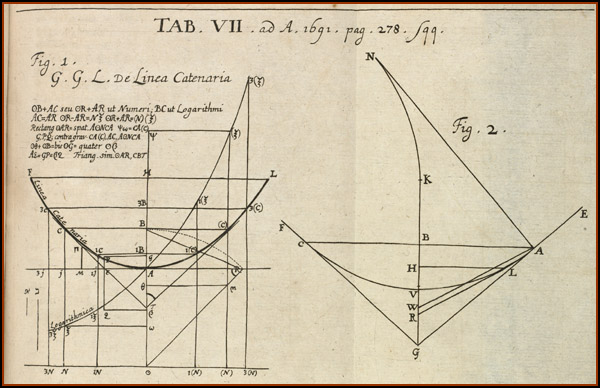 Reproduced
with
permission from the Huntington Library, San
Marino, California.
Leibniz's solution is on the left. Huygen's illustation is on the right. And from another classic . .
.
And from another surprising source, a letter from Thomas Jefferson . . .
|
|||||||||||
|
|
| 2015 Update: See
Philosophical Transactions A - Celebrating 350
years of
Philosophical Transactions: physical sciences papers
(Theme issue
edited by Dave Garner). C. R. Calladine, An amateur's contribution to the design of Telford's Menai Suspension Bridge: a commentary on Gilbert (1826). On the mathematical theory of suspension bridges. Philosophical Transactions A, Vol. 373, Issue 2039, April 13, 2015, pp. 7-11. |
| http://www-history.mcs.st-and.ac.uk/history/Curves/Catenary.html |
| http://mathworld.wolfram.com/Catenary.html |
| Blackwell, Richard J. (trans.), Christiaan Huygens' The Pendulum Clock or Geometrical Demostrations Concerning the Motion of Pendula as Applied to Clocks, The Iowa State Univ. Press, 1986. |
| Boyd, Julian P.,
editor, The
Papers of Thomas
Jefferson, Princeton University Press, vol. 14,
1958, pp. 372-4. |
| Bukowski, John, Christiaan Huygens and the
Problem of the
Hanging Chain, The College Mathematics
Journal, 39 (1),
January, 2008. |
| Carr, George
S., A Synopsis
of Elementary
Results in Pure Mathematics, London and
Cambridge, 1886.
The catenary was Proposition #5273 in this classic of
classics that
guided British mathematics, especially in the highly
competitive
Mathematical Tripos for one-half of a century. One of the books most ardent readers was Srinivasa Ramanujan who mastered its contents as a young man in India, and later, in his early 30s, read the book as a source of comfort when on his death bed. |
| Galilei, Galileo, Two New Sciences - Including Centers of Gravity and Force of Percussion, trans. Stillman Drake, University of Wisconsin Press, 1974. |
| Galilei, Galileo, Dialogues
Concerning Two New Sciences, trans. Henry Crew and
Alfonso de
Salvio, Northwestern Univ. Press, 1950. |
| Gray, Alfred, Modern Differential Geometry of Curves and Surfaces with MATHEMATICA®, 2nd ed., CRC Press, 1998, pp. 55-57. |
| Lockwood, E. H., A Book of
Curves, Cambridge University Press, 1961. |
| Swetz, Frank, John
Fauvel, Otto Bekken, Bengt Johansson and Victor Katz, Learn
from
the MASTERS!, MAA, 1995, pp.123-130. (See V. Frederick Rickey, "My Favorite Ways of Using History in Teaching Calculus", in Swetz, et al.) |
| Ventress, Andy,
"Digital Images+Interactive Software=Enjoyable, Real
Mathematics
Modeling," Mathematics
Teacher,
101 (8), April 2008, pp. 568-572. |
| Yates, Robert, CURVES AND
THEIR PROPERTIES, The National Council of Teachers of Mathematics,
1952. |


